JA Project’s design explores institution’s historical ties to slavery and colonialism
Jayden Ali, director of architectural studio JA Projects, and co-curator of the British Pavilion at the Venice Biennale 2023, is behind the exhibition design for the new RA show Entangled Pasts 1768 – Now: Arts, Colonialism and Change.
The exhibition draws on the Royal Academy’s collection, international loans, and contemporary artists to explore the connection between art, slavery, colonialism, and the institution’s role in shaping these histories.
JA Projects undertook the design of the exhibition spaces across 11 of the Royal Academy’s main galleries. Their aim was to provide a comprehensive exploration of the institution’s historical ties to slavery.
Ali said: “In support of the RA’s brave investigation of its colonial past, we drew upon our ongoing enquiry into the entangled histories of the Black and Brown people in the West. For us, it was about helping to deliver an exhibition that challenged the historic optics of power that have done so much to shape the narratives, ideas and beliefs that supported enslavement and empire.
“And so, our design frames a forthright yet delicate conversation with the building, the people and the art that make up the Academy to honestly process the past, celebrate the pioneering Academicians of today and honour our collective tomorrow.”
The exhibition features over 100 artworks spanning 250 years, connecting historic artists such as Joshua Reynolds and JMW Turner with modern-day artists like Frank Bowling and Kara Walker.
JA Projects collaborated closely with the Royal Academy’s curatorial team and contemporary artists to develop a design that seeks to address the themes of power, representation, and history.
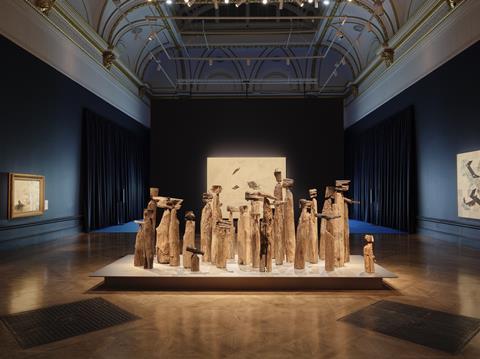
The exhibition begins in the Central Hall, where JA Projects intentionally subverts the traditional display of busts of Western art giants, including Da Vinci and Titian. Dim lighting and strategically placed spotlights create a dramatic entrance.
Portraits of Black figures line the walls, surrounding Francis Harwood’s 1758 sculpture “Bust of a Man,” positioned on an eight-sided plinth. The plinth, covered in burr timber, is intended to symbolise resilience in response to trauma, echoing the exhibition’s theme and Britain’s historic impact overseas.
The exhibition then unfolds into three sections – Sites of Power, Beauty and Difference, and Crossing Waters – each designed by JA Projects to enhance the artworks’ visibility and tonally respond to the curatorial themes.
Throughout, a play of brightness and shadow emphasises individual works and seeks to reference the interdependence of light and dark, freedom and slavery.
JA Projects employed a sombre colour palette dominated by dark greys, reflective metals, and deep reds and blues to underscore the seriousness of the exhibition’s content.
The overall design intent was to create a thematic journey through the galleries, encouraging emotional responses, changes of pace, and moments of reflection.
As visitors navigate through “Entangled Pasts,” JA Projects intention is that they are prompted to make connections between artworks, explore alternative narratives to conventional Western perspectives on history, and challenge assumptions about their role in shaping a shared future.
The exhibition runs until 28 April.










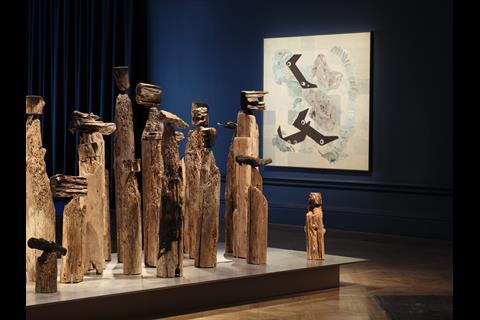

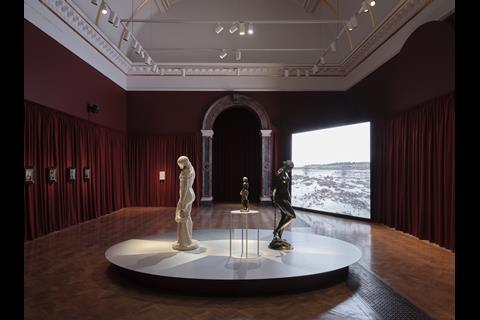
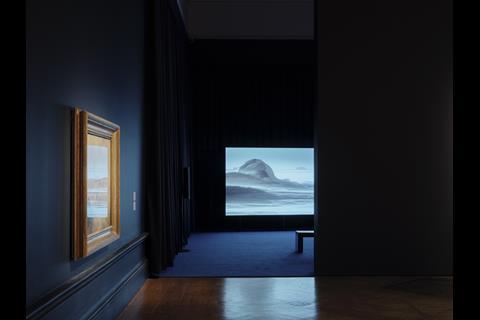
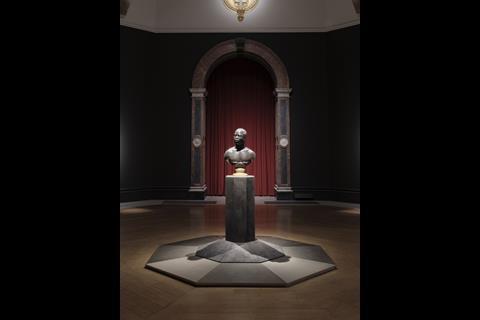
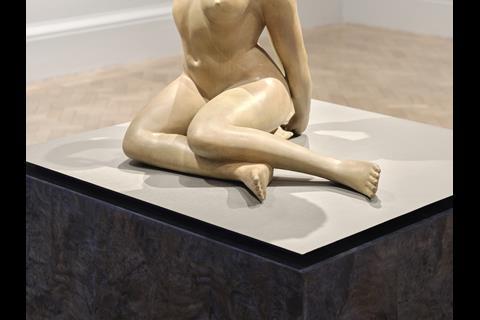







No comments yet